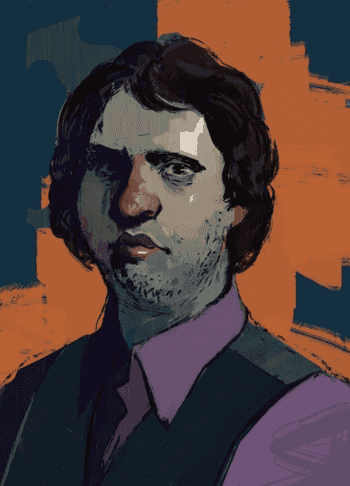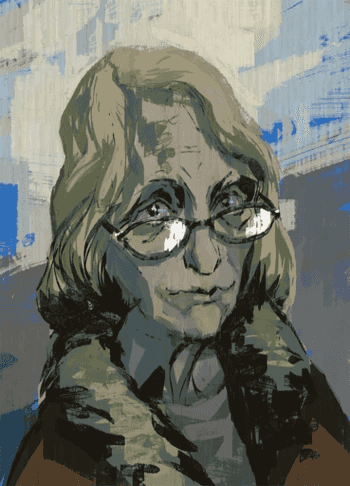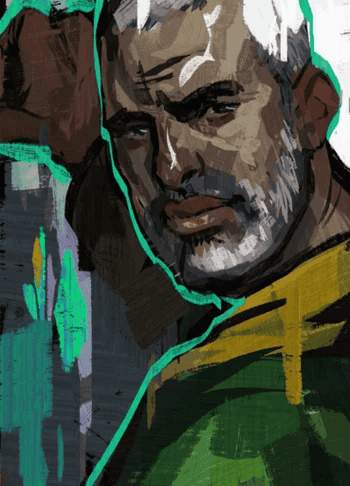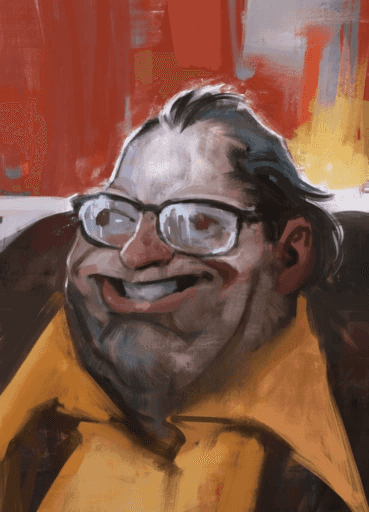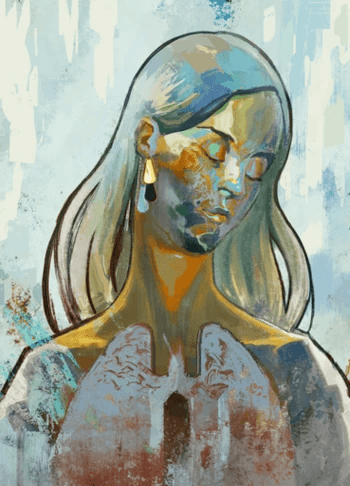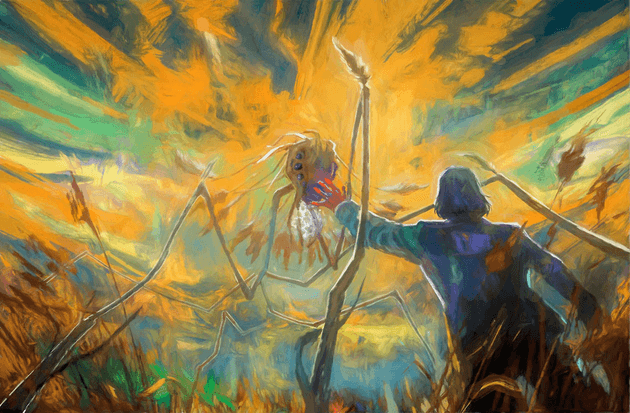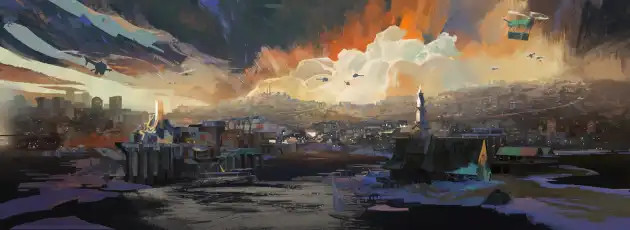Disco Elysium: A Reflection on Tragedy, Society, and the Human Condition
In a dimly lit room, you awaken. The harsh bite of the cold sea air leaks into your hotel room. The remnants of a night lost to excess strewn about you, a painful reminder of the human being that you once were, now shattered into fragments of forgotten memories. This is the introduction to the haunting yet enthralling world of "Disco Elysium" — the groundbreaking game of 2021 that profoundly resonated with me during Christmas of 2023. Although I’m a bit late to the party on this game, I couldn’t help but try and summarize my own experiences in what made this game so special to me.
The game is more than a narrative journey; it's a profound exploration of the human psyche, mirroring the complexities and turmoil found in the dark alleys and closed doors of our own world. Through its cast of characters, each embodying the nuanced facets of human nature, Disco Elysium delves into the depths of modern urban regeneration and decay, reflecting the histories of cities that have risen and fallen in our own reality. It's a journey through the heart of human despair and hope, a reflection of our own world's intricate and often troubled narrative.
A rich tapestry of tragedy and despair
In 'Disco Elysium,' players embark on an immersive odyssey not just of personal introspection, navigating the protagonist's fractured identity and pained past, but also the discovery of a world brimming with emotionally-driven and complex characters. The game perfectly balances humor and political-charged commentary with its unflinching depiction of raw, human feelings and psychological depth, reflecting the tapestry of experiences in the fictional town of Revachol. Within its world, each character emerges not only as a game piece for the character to interact with, but also as a tiny representation of human tragedy, resilience, and compassion.
The first character you encounter is Garte, the cafeteria manager at the Whirling-in-rags hostel. He takes immense pride in his hostel, an establishment he named himself. This business stands as one of the very few thriving social hubs in the town, offering a warm and inviting space for community gathering and entertainment. Garte's has turned the Whirling-in-rags into a beacon of hospitality in an otherwise bleak and depressing town. However, beneath his professional success lies his own tragedy: Garte is deeply lonely and his near-constant work leaves little room for personal connections. He assumes a parental, albeit transactional, role for the residents of Revachol – caring for and feeding them. Yet, this is a one-sided nurturing, for as he gets older, there may be no one to reciprocate the care that he has extended to others.
The story of the Cryptozoologists, who spent their entire lives chasing after the phasmid, only to barely miss seeing it in person by a single day and a few hundred meters. Despite Lena's work accident leaving her paraplegic, her husband Morell's dedication to including her in his cryptid hunts showcases not just the depth of their love, but also a remarkable resilience in the face of adversity. Their journey is a beautiful reflection of the human spirit's capacity to chase dreams against all odds. It's a pursuit fueled by hope, curiosity, and love, transcending disappointment and skepticism.
The relationship between René and Gaston highlights the game's key themes, presenting a mix of comfort and sadness in their shared but unrealized search for ideological understanding. René, a steadfast royalist and honored war veteran, and Gaston, the contrarian, embody the extremes of the sociopolitical spectrum that lies at the center of Revachol. Despite their differences, they are inseparable companions, each being the other's sole friend and confidant. As the story unfolds, it's revealed that René harbored unexpressed romantic feelings for Gaston, a truth that remains unspoken until René's untimely passing. This storyline underscores a profound tragedy rooted in inaction and unvoiced emotions, highlighting the importance of seizing the moment and cherishing relationships before they slip away.
The story of the Kortenaers in "Disco Elysium" is also steeped in its own unique brand of sorrow. The hanged man, left to perish at birth in a leaf compactor, grew up alongside Raul in the care of abusive foster parents. Although there's no excusing their violent actions with the Krenel, it's evident that the brothers' lives were marred by hardship and trauma. The Krenel's initial presence was merely to monitor the Union strike, but Ellis's death dramatically escalates tensions, culminating in the tribunal where Raul is killed by the Harrier. While the brothers' past actions against the Krenel are far from commendable, the harrowing experience of witnessing a sibling's death and seeing their body desecrated in public is a trauma that could deeply send anyone over the edge.
The intertwining fates of its characters against the backdrop of Revachol serve as a canvas for a deeper meditation on the nature of regret and the fragility of human connections. The narrative tapestry woven by the game reveals a profound truth: in our quest for something greater, be it love, ideology, or purpose, we risk overlooking the beauty and significance of the here and now. 'Disco Elysium' thus emerges not just as a game but as a compelling commentary on the human condition, a reminder of the transient yet powerful nature of our actions and choices in the story of life.
Social environment, healthy but scared.
Revachol embodies a captivating paradox: a society on the brink of disorder, yet underpinned by a remarkable amount of social cohesion. Amidst its chaos, there exists an unexpected harmony where residents, despite stark political and economic divides, discover unity and solidarity. The city achieves a unique equilibrium, with its people often displaying a readiness to extend help. Despite the crumbling economy and a general air of standoffishness among its inhabitants, the narrative frequently spotlights moments of compassion and empathy among the residents
In "Disco Elysium," the union members epitomize a rugged exterior with a core of steadfast loyalty, especially evident in their unwavering protection of Klaasje, an outcast. This protective instinct extends beyond mere duty, showcasing a deep-rooted sense of community responsibility. Similarly, the blind woman in the fishing village embodies the game's theme of unexpected kindness, as she offers shelter in her home despite the protagonist's reckless behavior nearby.
Even Gary the Cryptofascist, demonstrates his own capacity for openness and acceptance, welcoming Morell and Lena into his home after their hunt for the phasmid. Despite their skepticism towards the burning rhino cryptid, a belief that is of high importance to him, he still provides a place for them to stay. These instances collectively highlight a recurring theme in the game: beneath the surface of a fractured society lie moments of compassion and solidarity, revealing the complex layers of human connection in the world of Revachol.
Despite Evrart's corruption and his deep involvement in the drug trade, his role in "Disco Elysium" offers a complex perspective on the benefits he may bring to the island. The game is set four decades after a war, during which time the Wild Pines organization has dominated the island's economy. Despite this control and substantial profits, exceeding 20 billion reál in the previous year alone, Wild Pines has notably failed to reinvest in the community. This neglect has left the island, once a thriving cultural center for Wild Pines' middle management, in a state of disrepair, with residents living in dilapidated buildings and destitute conditions. Evrart, for all his questionable motives, at least feigns an interest in community rejuvenation, proposing to replace the fishing village with a recreation center. His gesture, however insincere, stands in stark contrast to the longstanding apathy of Wild Pines, casting him in a somewhat different light and suggesting a nuanced view of his role in the community's potential revival.
"Disco Elysium" masterfully presents Revachol as a microcosm of the complexities inherent in human society. Within this city teetering on the edge of chaos, the game reveals an underlying tapestry of interdependence and empathy. Each character and faction, from the union members to figures like Evrart, contributes to a nuanced narrative that transcends simple categorizations of good and evil. Revachol's resilience, mirrored in its inhabitants, reflects a profound truth about human societies: even in the face of adversity and moral ambiguity, there exists an innate tendency towards communal support and solidarity. This unexpected harmony amidst strife highlights the capacity for communities to find balance, not through uniformity, but through a mosaic of diverse yet interconnected lives. In weaving together stories of rugged loyalty, unexpected kindness, and complex motives, "Disco Elysium" doesn't just tell a story of a fictional city; it offers a compelling commentary on the resilience and complexity of the human spirit, showcasing how even in broken systems, empathy and cooperation can flourish, painting a hopeful picture of societal cohesion and potential renewal.
Religion, belief and the pale
The religion of Dolores Dei and the enigmatic concept of the Pale serve not just as background lore, but as pivotal elements that deeply influence the characters and the player's journey. The religion, with Dolores Dei elevated to divine status through political mechanisms, provides a unique lens through which players can examine the interplay between faith and governance. This intersection becomes particularly personal in the lives of characters like Kim Kitsuragi, whose professional duties under the Moralintern contrast with his private spiritual beliefs. As players navigate conversations and decisions involving these religious elements, they are subtly invited to reflect on the complex relationship between personal convictions and societal structures.
The Pale, as a representation of the unknown and the end of all things, adds a layer of existential contemplation to the game. Its presence in the city of Revachol is not just a physical barrier but a symbol of existential dread and uncertainty that each character grapples with in their own way. For the player, the Pale becomes a metaphor for the choices they face in the game – whether to embrace the unknown and the possibilities it holds or to retreat into the comfort of the familiar. This duality of the Pale as both a boundary and a gateway mirrors the game's overarching theme of personal and societal transformation.
“It is you who are total, extreme madness. A volatile simian nervous system, ominously new to the planet. The pale, too, came with you. […] There is an almost unanimous agreement between the birds and the plants that you are going to destroy us all.” Insulindian Phasmid
As players delve deeper into the world of "Disco Elysium," they encounter various interpretations of the Pale and religion from the diverse cast of characters. Each perspective offers a different way to understand these complex concepts, influencing the player's own interpretation and decisions. In this way, religion and the Pale become more than just narrative devices; they are integral to the game's exploration of identity, belief, and the human condition. The player's interaction with these elements ultimately shapes their understanding of Revachol and its inhabitants, making "Disco Elysium" a profound commentary on the power of belief and the human response to the unknown.
Art, music — bringing everything together
The art and music in "Disco Elysium" are far more than aesthetic choices; they are integral to the storytelling, deepening the game's exploration of despair, hope, and the human condition. The art style, with its post-impressionist echoes and graphic novel-like visuals, vividly portrays the emotional landscape of Revachol. The stark contrasts, rich colors, and expressive character designs not only build the game's atmospheric setting but also visually narrate the city's story of decay and resilience. Each frame and character design is a brushstroke in the larger painting of Revachol's complex society, depicting a world teetering between despair and the glimmers of hope.
Musically, "Disco Elysium" uses motifs like the “Instrument of Surrender” to enhance its narrative. This particular motif, a somber trumpet piece, echoes throughout the game, symbolizing the transition from a once-glorious past to a present filled with regret and loss. Its transformation from a battle cry to a mournful hymn encapsulates the game's thematic focus on the consequences of past actions and the lingering hope for redemption. The music's evolution mirrors the protagonist's journey and the broader changes in Revachol, with different versions of the Whirling-in-rags motif representing the varied moods and times of day in the game. This dynamic use of music not only sets the tone for each scene but also subtly influences the player's emotional response and interpretation of the story.
Furthermore, the soundtrack's interplay with the game's art creates a cohesive narrative experience. The melancholic tunes accompanying scenes of desolation in the city's artfully rendered streets, or the more upbeat rhythms in moments of camaraderie and revelation, deepen the player's immersion in the world of Revachol. Together, the art and music of "Disco Elysium" do more than just complement the narrative; they are narrative forces in their own right, shaping the player's journey through a city marked by its history, its struggles, and its enduring hope.
Conclusion
"Disco Elysium" stands as a testament to the profound capabilities of video games as a medium for storytelling. Through its rich tapestry of characters, each vividly brought to life with deep emotional narratives, the game presents a microcosm of human experience in the fictional city of Revachol. The intertwining stories of Garte, the Cryptozoologists, René and Gaston, and others, are not just individual tales of joy and sorrow; they collectively weave an intricate story of a society grappling with complex themes of despair, hope, ideology, and redemption.
"Every school of thought and government has failed in this city, but I love it nonetheless. It belongs to me as much as it belongs to you." -Kim Kitsuragi.
The setting of Revachol, with its detailed depiction of urban decay and resilience, serves as a backdrop that enhances these personal journeys. It's a character in its own right, reflecting the game's exploration of themes such as the impact of war, economic disparity, and the struggle for ideological and personal identity. The art and music of the game further elevate this experience, intertwining with the narrative to create a richly immersive world that is both haunting and beautiful. They underscore the emotional depth and complexity of the characters' stories and the choices the player makes.
"Disco Elysium" is not just a game; it's a narrative journey that showcases the power of video games as a storytelling medium. It challenges players to not only engage with its world and characters but to reflect on their own perspectives and choices. In doing so, it demonstrates how video games can be as emotionally impactful and thematically rich as any other form of literature or art. "Disco Elysium" thus emerges as a shining example of how video games can create unique, immersive, and thought-provoking experiences, redefining what it means to tell a story.
Revachol forever.
